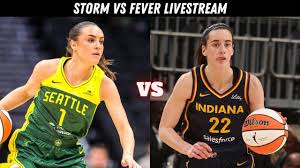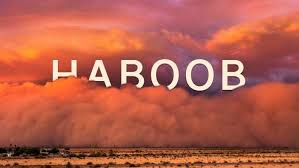Introduction
Baseball thrives on rivalries. While the most famous matchups often involve geographic battles—like Yankees vs Red Sox or Dodgers vs Giants—the San Francisco Giants vs Milwaukee Brewers rivalry carries its own unique narrative within Major League Baseball (MLB).
Spanning across decades of National League competition, inter-divisional matchups, and high-stakes playoff races, the Giants-Brewers clashes showcase both historic franchises and underdog grit. The Giants, one of MLB’s oldest and most storied teams, bring tradition and championship legacy, while the Brewers, a younger franchise, embody resilience, small-market success, and passionate fan support.
This article explores 4,000 words worth of history, statistics, culture, and future outlook on the Giants vs Brewers rivalry—painting a full picture of why these two teams matter to each other and to baseball at large.
Team Backgrounds
San Francisco Giants
- Founded: 1883 (as New York Gothams → New York Giants → San Francisco Giants in 1958)
- Home Stadium: Oracle Park, San Francisco, California
- World Series Titles: 8 (most recent: 2014)
- Legacy: Known for Willie Mays, Barry Bonds, and their 2010s dynasty (2010, 2012, 2014 championships).
The Giants are among MLB’s most iconic franchises, with deep East Coast roots and West Coast dominance. They embody tradition, innovation, and a championship pedigree.
Milwaukee Brewers
- Founded: 1969 (Seattle Pilots → moved to Milwaukee in 1970)
- Home Stadium: American Family Field, Milwaukee, Wisconsin
- World Series Appearances: 1 (1982, lost to St. Louis Cardinals)
- Identity: A beloved small-market team with passionate fans and iconic branding tied to Milwaukee’s brewing heritage.
Though the Brewers have not won a World Series, they’ve developed into consistent playoff contenders in recent years, thanks to strong pitching staffs and rising stars.
The Origins of the Giants vs Brewers Rivalry
The Giants and Brewers first faced off in the 1970s after the Brewers’ relocation to Milwaukee. However, the rivalry only intensified in the 1990s when MLB’s league realignment brought them into more frequent competition.
- The Brewers were originally an American League team, meaning matchups with the Giants were rare.
- In 1998, MLB realignment shifted the Brewers into the National League Central, creating regular meetings with the Giants.
- As both teams competed for playoff spots in the 2000s and 2010s, their head-to-head games often carried postseason implications.
The rivalry became a symbol of contrast: the Giants’ rich championship history versus the Brewers’ quest to establish themselves as a contender.
Memorable Games and Moments
1. 1982 Season (Indirect Rivalry)
Though the Giants and Brewers didn’t directly clash in the postseason, the Brewers’ 1982 World Series run came at a time when the Giants were fighting for relevance in the National League. Brewers fans often contrast their one Fall Classic appearance with the Giants’ dynasty years.
2. Barry Bonds vs Brewers Pitching (1990s–2000s)
Barry Bonds dominated against Milwaukee pitching, consistently hitting home runs and boosting his career stats. For Brewers fans, Bonds became a nightmare figure, symbolizing the Giants’ offensive power.
3. 2002 Playoff Races
Both teams were battling for playoff positioning. Giants, led by Bonds, made a World Series appearance that year (losing to the Angels), while Milwaukee faded. The Brewers’ inability to compete highlighted the gap between franchises.
4. 2011 Brewers NLCS Run
The Brewers’ magical 2011 season saw them make the NLCS. While the Giants didn’t face them in the playoffs that year, regular-season clashes were heated, as both clubs were battling for postseason seeding.
5. 2021 NLDS Implications
Both teams were playoff contenders, with the Giants winning a franchise-record 107 games and the Brewers dominating the NL Central. Though they didn’t meet in the postseason, their regular-season matchups had playoff-like intensity.
Star Players Who Shaped the Rivalry
Giants Legends
- Willie Mays – Though his prime predated the Brewers’ entry into MLB, Mays’ legacy gave the Giants historic prestige.
- Barry Bonds – The most feared hitter of his era, Bonds routinely punished Milwaukee pitching.
- Buster Posey – Heart of the Giants’ 2010s dynasty, Posey’s leadership and clutch hitting defined San Francisco’s championship runs.
- Madison Bumgarner – His postseason dominance made him a Brewers nemesis in regular-season showdowns.
Brewers Legends
- Robin Yount – The face of Milwaukee baseball, a two-time MVP and Hall of Famer.
- Paul Molitor – A consistent offensive weapon and leader during the 1980s.
- Ryan Braun – The Brewers’ slugger who helped push them into postseason contention in the 2010s.
- Christian Yelich – 2018 MVP, his peak years saw him dominate opposing pitchers, including the Giants’.
- Corbin Burnes & Brandon Woodruff – Anchors of Milwaukee’s modern pitching staff, consistently frustrating Giants hitters.
Tactical Battles
Pitching Duels
- Giants: Known for dominant rotations, especially in the 2010s with Bumgarner, Tim Lincecum, Matt Cain, and later Logan Webb.
- Brewers: Modern success built on elite arms like Burnes, Woodruff, and Josh Hader in the bullpen.
Offensive Styles
- Giants: Historically built on power hitters (Bonds era) and then shifted to clutch hitting, contact, and situational baseball in the 2010s.
- Brewers: Relied on power hitting during the Braun and Yelich eras, with an emphasis on home runs and athleticism.
Defensive Strategies
- Giants’ outfield defense, led by players like Hunter Pence, often neutralized Milwaukee’s power hitters.
- Brewers’ versatility in fielding, particularly with Yount and Molitor in earlier decades, gave them adaptability.
Statistical Breakdown
- All-Time Head-to-Head Record (through 2023): Giants lead historically, though Brewers have narrowed the gap.
- Postseason Meetings: None to date (though both have been playoff-caliber teams in overlapping years).
- Scoring Trends: Giants’ dynasty years saw them control matchups, while Brewers’ modern pitching staff has evened the playing field.
Fan Culture and Atmosphere
- Giants Fans: Known for sellouts at Oracle Park, a beautiful waterfront stadium. Passionate about their team’s dynasty and history.
- Brewers Fans: Famous for tailgating culture at American Family Field. Loyal, blue-collar fan base that embraces underdog mentality.
When the Giants and Brewers meet, the cultural clash is visible: big-market tradition vs small-market passion.
Current State of the Rivalry
As of the 2020s:
- The Brewers are perennial playoff contenders thanks to elite pitching and a mix of veteran hitters.
- The Giants are retooling after their 2010s dynasty but remain competitive, especially with Logan Webb leading the rotation.
Their head-to-head games continue to influence playoff races, particularly as both teams often fight for wild card spots.
Future Outlook
The rivalry’s next chapter could be shaped by:
- Youth Development: Giants’ prospects like Marco Luciano and Kyle Harrison versus Brewers’ pipeline of pitching talent.
- Market Dynamics: Brewers face payroll challenges, while Giants can lure big free agents.
- Playoff Collision Course: A potential postseason matchup would elevate this rivalry’s national profile dramatically.
Conclusion
The Giants vs Brewers rivalry may not carry the same historic weight as Yankees-Red Sox or Dodgers-Giants, but it embodies the soul of Major League Baseball.
It’s a battle of contrasts:
- Historic franchise vs rising contender.
- Big-market San Francisco vs small-market Milwaukee.
- Dynastic tradition vs underdog resilience.
From Barry Bonds’ towering home runs to Christian Yelich’s MVP season, from Buster Posey’s leadership to Corbin Burnes’ pitching dominance, every chapter adds depth to this rivalry.
As MLB evolves, Giants vs Brewers games will continue to matter, both for playoff implications and for the passionate fan bases that treat every meeting as a test of pride.


